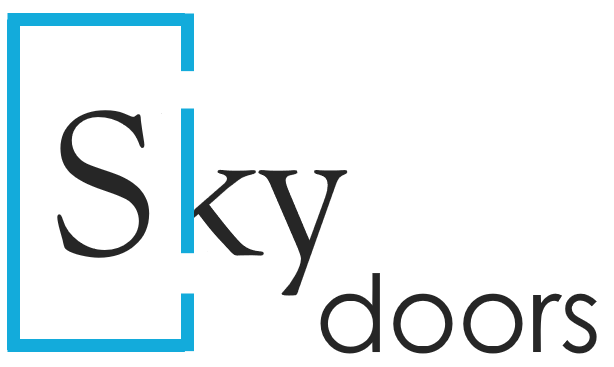Finishing
ALL TIMBER JOINERY REQUIRE FINISHING
All our timber products will require finishing with the application of either an opaque or transparent finish applied to all 6 sides for protection from the elements. Without a finish, all timber will swell or crack and will discolour. No warranty applies to unfinished joinery.
To protect your warranty and ensure the longevity of your timber joinery, it is important to apply a full coat of sealer to dry timber joinery within 48 hours of receiving it. Typically, at least four coats of finish are required for optimal protection, including two coats of primer or undercoat and two topcoats. Regular inspections are recommended to check for signs of dryness, peeling, cracking, or discoloration, especially for joinery exposed to weather and sunlight or in coastal areas, as they may require more frequent maintenance.
TIMBER SPECIFIC FINISHING INFORMATION.
MERANTI: Sky Doors uses Meranti for most of the timber fabrications. Meranti has some slight colour variations. This is generally addressed with light stains rather than the application of a clear coat. Meranti is also suitable for full-colour paints.
OAK: Sky Doors specializes in crafting joinery out of Oak, but typically does not have a pre-made stock available in this type of wood. Oak has a smooth texture and consistent color, making it suitable for a wide range of finishes, including both clear and full-color options.
KWILA/MERBAU: Sky Doors uses Class 1 hardwoods for sills, usually in Kwila or Merbau. These sills can release a dark stain onto the surrounding surfaces if not sealed on all sides to contain their natural tannins. It is crucial to ensure that the underside and all faces of the sills are fully sealed with a product that is compatible with the sealant used on the joinery before installing them.
SKY DOORS RECOMMENDS SIKKENS RANGE.
Some product ranges in the Sikkens brand of finishes as being ideal for joinery. Please avoid water based acrylic finishes as they void your warranty. Sikkens is an oil based resin that has the advantages of
• Long life in exposed conditions & easily maintained.
• Easy to apply and easily re-applied over time.
• Easily removable from glass
• Can be used internally & externally
• Nourishes the timber & prolongs its life.
There are 2 products in the coating system – SIKKENS CETOL HLS (sealer) and SIKKENS FILTER 7 (topcoat) available in a range of tints as well as the honey clear 077 transparent finish. Sky Doors is not sponsored or affiliated with Sikken’s AkzoNobel company.
SHOWROOM FINISH ON THE JOINERY
Sikkens HLS should be applied within 48 hours on a clean raw timber. Once dry, lightly sand the surface of the timber along the grain using fine sandpaper or an abrasive pad. Avoid filling in nail holes or any other imperfections until after the initial coat of sealer is applied to prevent unsightly marks. After the first coat of sealer has been applied, use an oil-based wood fill putty that is darker than the timber. Repeat the process of sealing and sanding until a smooth, even finish is achieved. It's important that all smoothing and preparation are done at the priming/sealing stage as there is no need to sand the topcoats. It is recommended to use SIKKENS FILTER 7 for the top coats, which has added UV filters for added protection, as it will build up to a rich satin finish quickly.
PAINTING THE JOINERY WITH A COLOUR AND WHITE
We recommend using an oil-based enamel finish for joinery, as opposed to acrylic coatings (water-based). It's important to note that there are different types of oil-based coatings available, and not all of them will provide the desired finish. Many oil finishes are designed for use on weatherboards and other exterior timbers and contain high levels of oil that dry slowly and are difficult to sand. As joinery requires multiple coats with sanding in between, the primer/sealer should be a fast-drying oil paint that sands easily to a fine powder. Topcoats of enamel should only be applied once the basecoats have been sanded smooth. Avoid using dark colors for exterior joinery, as they will absorb and retain heat which can cause the joinery to warp or shrink.
ALTERNATE PRODUCTS
Some painters prefer quick application coatings that give them a very profitable turn around but can be disastrous for the joinery and its owner. Generally speaking, if the joinery is completely internal you can use any finish, but for external joinery the following is a list of products should be avoided -
• Polyurethane coatings, estapols and lacquers - All such finishes are too inflexible and restrain natural timber movement. They therefore crack quickly and because they retain and concentrate heat, can cause severe warping or splitting in the joinery. They also break down quickly in ultraviolet light. These finishes void your joinery warranty if used externally.
• Acrylic coatings – Have the effect of wrapping your joinery ‘in plastic’ so that it cannot breathe. Coatings tend to ‘stick’ and restrict movement where, for example, sashes have to slide across each other in windows and doors. They are generally complicated to re-apply over time requiring etching and other surface keying to permit subsequent coats to bond. These finishes void your joinery warranty if used externally.
• Varnishes and Natural oil finishes – Marine varnishes do not have a long life & most modern varieties have similar disadvantages to lacquers. Natural oil finishes are good for the timber but tend to be absorbed over a fairly short time so that regular recoating is required.
• Water repellent preservatives – Contain repellent waxes, resins and usually fungicide to provide a temporary water barrier which breaks down progressively due to atmospheric oxidization. Can cause compatibility and bonding problems with subsequent finishes and voids the joinery warranty.

